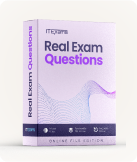APICS CPIM - Certified in Planning and Inventory Management Exam
Page: 2 / 56
Total 276 questions
Question #6 (Topic: Exam A)
The question below is based on the following information:

Work Center 1 has an available capacity of 1,200 hours per month. Which of the following amounts represents the cumulative difference between the required capacity and the available capacity of Months 1 through 3?

Work Center 1 has an available capacity of 1,200 hours per month. Which of the following amounts represents the cumulative difference between the required capacity and the available capacity of Months 1 through 3?
A. 50
B. 150
C. 1,250
D. 3,750
Answer: B
Question #7 (Topic: Exam A)
Which of the following statements about demonstrated capacity is true?
A. It reflects the future load.
B. It should be higher than rated capacity.
C. It considers utilization and efficiency factors.
D. It is determined from actual results.
Answer: D
Question #8 (Topic: Exam A)
A plant uses a level production strategy due to the high costs of hiring and letting go of skilled employees. The constrained resource is due to be upgraded in the fourth month of the planning horizon, and that will reduce capacity for that month by 17%.
Which of the following actions would be appropriate in this situation to maintain current levels of customer service and gross margin?
Which of the following actions would be appropriate in this situation to maintain current levels of customer service and gross margin?
A. Increase planned production for the next three periods.
B. Defer the upgrade to a period beyond the planning time fence.
C. Increase planned production from the fifth period on.
D. Defer the upgrade to the period in which the highest stock level is planned.
Answer: A
Question #9 (Topic: Exam A)
A company that uses concurrent engineering is likely to experience which of the following outcomes in the first period of a product's life cycle?
A. Fewer product design changes
B. An increase in obsolete inventory
C. More accurate forecasting
D. Conflicts between purchasing and engineering
Answer: A
Question #10 (Topic: Exam A)
One of the benefits of integrating a poka-yoke into the production process is that it can be used to:
A. facilitate mixed-model scheduling.
B. prevent defects.
C. improve machine utilization.
D. enable one-piece flow.
Answer: B
